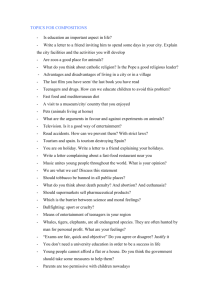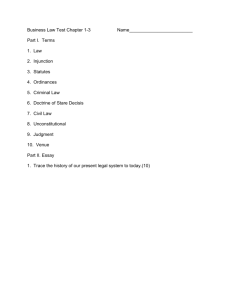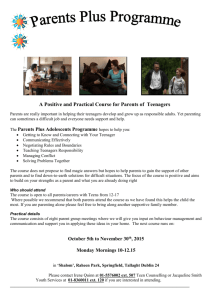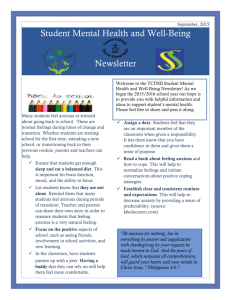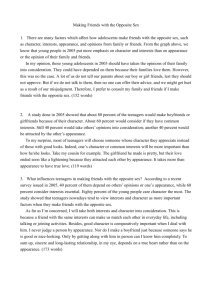November is a month of remembrance. Let's take time to celebrate
advertisement
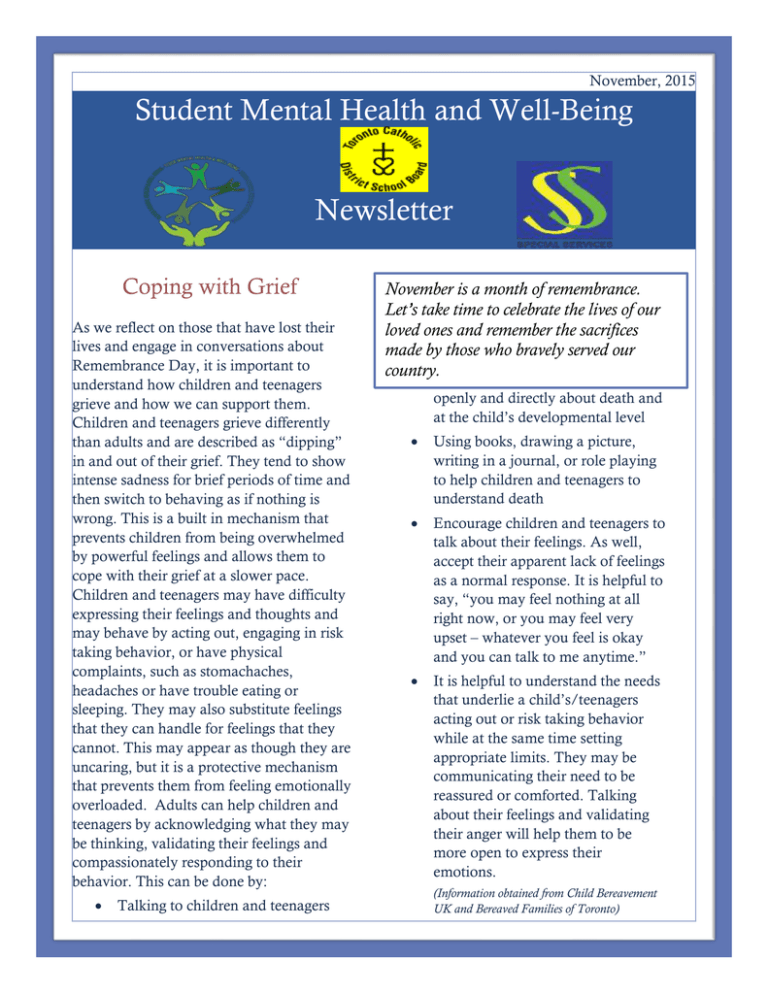
November, 2015 Student Mental Health and Well-Being Newsletter Coping with Grief As we reflect on those that have lost their lives and engage in conversations about Remembrance Day, it is important to understand how children and teenagers grieve and how we can support them. Children and teenagers grieve differently than adults and are described as “dipping” in and out of their grief. They tend to show intense sadness for brief periods of time and then switch to behaving as if nothing is wrong. This is a built in mechanism that prevents children from being overwhelmed by powerful feelings and allows them to cope with their grief at a slower pace. Children and teenagers may have difficulty expressing their feelings and thoughts and may behave by acting out, engaging in risk taking behavior, or have physical complaints, such as stomachaches, headaches or have trouble eating or sleeping. They may also substitute feelings that they can handle for feelings that they cannot. This may appear as though they are uncaring, but it is a protective mechanism that prevents them from feeling emotionally overloaded. Adults can help children and teenagers by acknowledging what they may be thinking, validating their feelings and compassionately responding to their behavior. This can be done by: Talking to children and teenagers November is a month of remembrance. Let’s take time to celebrate the lives of our loved ones and remember the sacrifices made by those who bravely served our country. openly and directly about death and at the child’s developmental level Using books, drawing a picture, writing in a journal, or role playing to help children and teenagers to understand death Encourage children and teenagers to talk about their feelings. As well, accept their apparent lack of feelings as a normal response. It is helpful to say, “you may feel nothing at all right now, or you may feel very upset – whatever you feel is okay and you can talk to me anytime.” It is helpful to understand the needs that underlie a child’s/teenagers acting out or risk taking behavior while at the same time setting appropriate limits. They may be communicating their need to be reassured or comforted. Talking about their feelings and validating their anger will help them to be more open to express their emotions. (Information obtained from Child Bereavement UK and Bereaved Families of Toronto) ; November, 2015 Building Resilience Resilience is “the ability to adapt to difficult or stressful events in our lives and to succeed despite adversity. It is also referred to as the ability to “bounce back”. We all experience difficult situations in our lives and it’s important to learn to face these challenges successfully in order to decrease any long term effects. We can help children and teenagers to become more resilient by: Optimistic Thinking : Model positive thinking and attitudes by “thinking out loud positively”. By modeling your positive thoughts and having a “can do” approach it will help foster optimism in students. Positive attitudes such as encouraging oneself to try, perseverance, and applying a problem solving approach are all ways of modeling positive thinking and attitudes. Positive Emotions: Emotions such as love and gratitude increase resiliency because they act as a “buffer” against depression. Children and teenagers who are loved and supported learn to express positive emotions. In order to foster positive relationships with students it is helpful to praise more than criticize. In a school setting, it is also important that every student has an adult whom they can trust. Promote Prosocial Behaviour: Students develop resiliency by helping others. Create opportunities for students to participate in clubs and programs that promote helping, sharing, and treating others with respect eg. Violence prevention, antibullying, and Stop The Stigma programs. Invite a guest speaker to speak with staff and parents about how to build resiliency Foster Feelings of Competency: Students who achieve academic success and develop personal talents feel more competent and are able to deal with stress more positively. This can be done by treating students as collaborators in the learning process, providing consistent, clear expectations, and teaching good study skills. (Information obtained from Virginia Smith Harvey) Mental Health Initiatives 2015-16 TCDSB Mental Health and Well-Being Strategy 2015-18 to be released soon Support for schools in developing a mentally healthy classroom. See Supporting Minds on the Ministry’s website and edugains.ca Building partnerships with community agencies, families, and parishes SAFE TALK suicide awareness workshops for staff available via PAL Secondary Schools’ Stop The Stigma Symposium Dec.1st ; November, 2015 Remembrance Day On Remembrance Day we honour the men and women who served Canada. We reflect on the sacrifices of those who have died so that we may have freedom and peace. Encouraging discussions and participating in activities about Remembrance Day encourages students to become “socially minded” and fosters feelings of empathy. Students can say “thank you” in many way: Engaging in creative writing about Remembrance Day Using social media to spread the word about commemorative events at your school. Using the mobile app “Veterans Matter” Invite a Veteran or a Canadian Armed Forces member as a guest speaker As a class watch online interviews with Veterans in “Heroes Remember” (a searchable database) Read the poem “In Flanders Field” by Lieutenant Colonel John McCrae Write the troops and let your Canadian Armed Forces members know you appreciate them Wear a poppy Create a Remembrance Wall where students can write down thank you notes to Armed Forces or a special memory of someone they lost or miss in their lives. Did you know….. November 11th is the day that World War I ended. It is also known as Armistice Day An Armistice was signed at the end of World War I at 11:00am on November 11, 1918. The peace treaty that ended World War I is the Treaty of Versailles and it was signed in 1919 Poppies are a symbol of World War I because they grew in some of the places where battles were fought Poppies are sold by the Royal British Legion to raise money to support people in the armed forces For further information and a teaching guide for Remembrance Day visit the Royal Canadian Legion website at: www.veterans.gc.ca www.legion.ca Even though I walk through the valley of the shadow of death, I fear no evil, for You are with me; Your rod and Your staff, they comfort me.” Psalm 24:4 ; November, 2015 Suggested Readings and Websites: Fostering The Family: The TCDSB Pastoral Plan 2015-18 “ Together With one Voice: Harmonizing Our Faith Through Family , Parish, and School” 2015 focuses on the FAMILY As a family we can honour the memory of loved ones by: Sharing special memories Praying together Continuing family traditions Books Jason and the Memory Box by Shelley Fiset Explaining Death to Children by Earl Grollman Resiliency: Strategies for Parents and Educators by Virginia Smith Harvey A Great Attitude by Sandi Hill When I Feel Good About Myself by Cornelia Maude Spelman Websites National Association of School Psychologists: www.nasponline.org www.childbereavementuk.org bfotoronto.ca www.raisingresilientkids.com www.parentbooks.ca A Smile A Day… Did you know that your smile is a powerful tool! Most people think that we smile because we feel happy, but it can go the other way as well: we feel happy because we smile. So go ahead….smile! Alex Korb, Psychology Today Patricia Marra-Stapleton, Psychological Associate/Mental Health Lead patricia.marra-stapleton@tcdsb.org Marci Buhagiar, Psychological Associate: marci.buhagiar@tcdsb.org A special thank you to Sandra Figliomeni, Principal St Barnabus for her contributions
